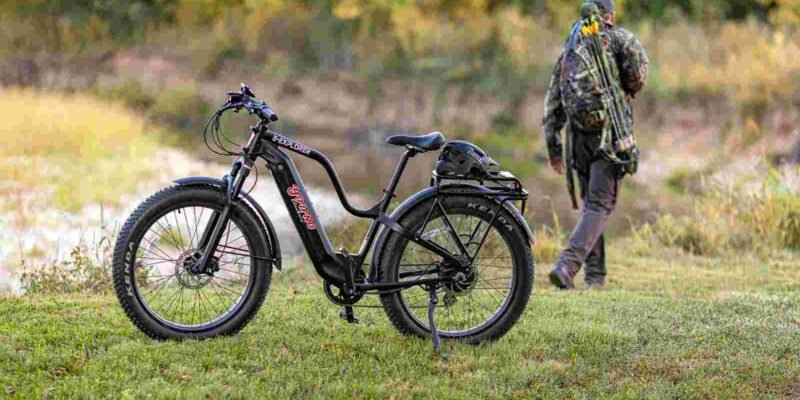Introduction
Fat tire ebikes have surged in popularity in recent years due to their versatility, durability, and ability to handle a variety of terrains. Whether you’re cruising through snow, sand, or rocky paths, these bikes provide an extra level of comfort and stability that traditional bicycles cannot. If you’re considering investing in a fat tire ebike, it’s crucial to understand the technical specifications that make these bikes so effective. This article explores the key features of fat tire ebikes, focusing on what makes them stand out and how to choose the right one based on these specifications.
What Makes Fat Tire Ebikes Unique?
Fat tire ebikes are designed with oversized tires, typically four to five inches wide. These wider tires offer more contact with the ground, providing better traction on challenging surfaces like snow, mud, sand, and gravel. However, fat tire bikes are not just for off-roading; they also offer a smoother ride on paved roads, making them an excellent choice for various riders.
Critical Components of Fat Tire Ebikes
Motor Power and Performance
The motor is critical to the fat tire ebike’s technical specifications. Fat tire ebikes typically feature motors that range from 500W to 1000W. The higher the wattage, the more influential the motor, and the better it performs on rugged terrains. For most riders, a 750W motor offers an excellent balance between power and efficiency, allowing for easier climbs and faster speeds.
Battery Capacity and Range
Battery life and capacity are also essential to a fat tire bike’s overall performance. Battery capacity is usually measured in watt-hours (Wh), and higher wattage typically translates to longer riding distances. A good fat tire bike should have a battery that offers at least 500Wh, allowing for a range of up to 50 miles on a single charge. Keep in mind that factors like terrain, rider weight, and weather conditions can affect the actual range.
Tires and Wheel Size
One of the defining features of a fat tire ebike is its oversized tires. The tire width ranges from four to five inches, providing stability and a cushioned ride on uneven terrain. These tires are made from durable rubber compounds designed to handle rough surfaces. When selecting a fat tire ebike, pay attention to the tire size and the type of tread, as these factors influence how well the bike performs on different terrains.
Frame Material and Design
The frame material is another vital specification when purchasing a fat tire ebike. Most fat tire bikes are made from aluminum, which provides a good balance of strength and weight. However, some models may feature steel frames, which are heavier but offer more durability. Carbon fiber frames are less common but provide the lightest and most rigid option, making them ideal for high-performance riders.
Suspension System
A sound suspension system is essential for absorbing shocks and providing a smooth ride. Fat tire ebikes may have front suspension, full suspension, or no suspension at all. Full suspension models are ideal for rough trails and off-roading, as they provide the most comfort. Front suspension models are lighter and offer good performance and comfort for most riders.
Brakes and Safety Features
The braking system on a fat tire ebike is critical for rider safety, especially when traveling at higher speeds on challenging terrains. Most fat tire ebikes feature hydraulic disc brakes, which offer superior stopping power compared to mechanical disc brakes. When selecting an ebike, ensure it has a reliable braking system to handle various conditions.
Choosing the Right Fat Tire Ebike for You
When choosing a fat tire ebike, it’s essential to consider your riding habits and needs. For example, using your bike primarily for commuting on paved roads may be OK with the largest motor or the widest tires. On the other hand, if you’re planning to ride on challenging off-road terrains, you’ll want to prioritize motor power, battery range, and a sturdy suspension system.
Benefits of Fat Tire Ebikes
- Improved Traction: The large tires allow for better grip on loose surfaces like sand, gravel, and snow.
- Enhanced Comfort: The wider tires absorb more shock, leading to a smoother ride over rough terrain.
- Versatility: Fat tire ebikes are great for various activities, from commuting to off-roading adventures.
- Increased Stability: The larger tires offer more stability, making it easier to ride on uneven surfaces.
Conclusion
Understanding the technical specifications of fat tire e-bikes is essential for selecting the model suitable for your needs. From motor power and battery capacity to tire size and frame material, each component ensures a comfortable, durable, and efficient ride. Considering these specifications, you’ll be better equipped to choose a fat tire ebike that meets your riding style and preferences.
FAQs
What is the ideal motor power for a fat tire ebike?
The perfect motor power for a fat tire ebike typically ranges from 500W to 1000W. A 750W motor offers a good balance of power for most riders.
How far can I ride on a single charge of a fat tire ebike?
A fat tire ebike with a 500Wh battery can offer a range of up to 50 miles, depending on terrain and other factors.
Are fat tire ebikes suitable for commuting?
Fat tire ebikes can be used for commuting, especially if you need to travel on uneven or gravel roads. The wide tires provide stability and comfort.
Can I ride a fat tire ebike on snow?
Yes, fat tire ebikes are specifically designed for rough terrains, including snow, as their large tires offer improved traction in such conditions.
What type of suspension is best for fat tire ebikes?
Full suspension is ideal for off-road riding as it absorbs more shock. However, the front suspension is lighter and more suitable for smoother rides.
Also read interesting articles at Disboard.co.uk













